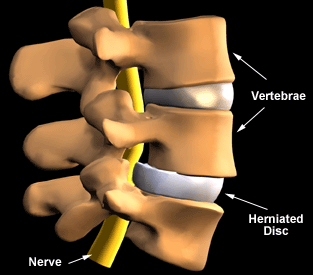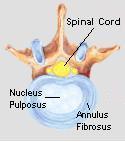|
|||
The human spine is made up of 24 spinal bones, called vertebrae, which are stacked on top of one another to form the spinal column. The discs, or more specifically, intervertebral discs, lie between adjacent vertebrae in the spine , each of which forms a cartilaginous joint to allow slight movement of the vertebrae, and acts as a ligament to hold the vertebrae together. [1-2]
The intervertebral disc is made of connective tissue, which is composed of fibers of collagen. Collagen helps the disc withstand tension and pressure: the nucleus of the disc acts as a shock absorber, absorbing the impact of the body¡¯s daily activities and keeping the two vertebrae separated. The function of the discs ensures human to do most of his daily movement such as jumping (absorbs pressure and protects spinal cord) and bending forward and back (allows spine flexibility).

